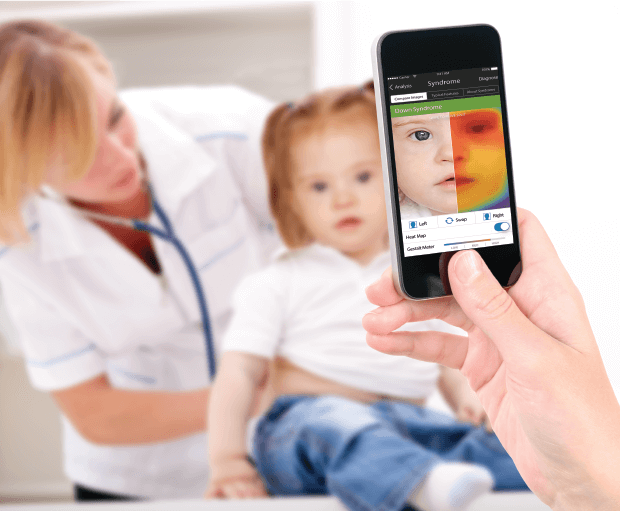What is a Chromosome Test?
What is a chromosome? Why test them?
23 chromosome pairs are included in almost every cell in your body (46 in all). Half come from your mother, and half from your father. The body follows directions or blueprints from the chromosomes to grow and develop. This information is contained in the thousands of genes inside each chromosome.
When the egg or sperm is formed, or when they meet and the embryo or fetus is in its early stages of developments, chromosomal abnormalities can occur. That’s what you’re testing for: they can cause miscarriage, various genetic diseases and syndromes, or growth and development problems, including but not limited to Down syndrome. Specifically, for mothers and sometimes fathers who are over a certain age, or who have a family history of diseases or genetic problems, or for those who have been trying and failing to become pregnant or carry a child to term, chromosome testing is indicated. Chromosome testing is sometimes called karyotype testing, genetic testing, or cytogenetic analysis.
Who needs a chromosome test?
If your baby or young child shows symptoms of a possible genetic disorder, your doctor or health care professional may recommend chromosome testing for one of the many types of genetic disorders and syndromes that can occur.
For women who have had several miscarriages, or who have not been able to conceive naturally, chromosome testing can show if it is because of a chromosomal abnormality.
If you have been diagnosed with, or show symptoms of, lymphoma, leukemia, myeloma or a certain type of anemia, these can be detected and identified by the chromosomal changes they can cause. This can help with diagnosis, monitoring, and treating these conditions.
How does it work?
Chromosomes are taken from the body, most often the chromosomes found in white blood cells. They are then isolated, stained for better viewability, and set under a microscope. The chromosomes are photographed through the microscope. Then, the photo is rearranged by chromosome size, from largest to smallest. They look like very tiny pieces of thread or fiber. A trained cytogeneticist can identify problematic chromosomes that may have missing pieces or extra pieces that should not be there.
Cell samples are taken in one of several ways: blood test, prenatal amniocentesis or CVS, and bone marrow aspiration or biopsy. Here’s how it works.
Blood test (general): A blood sample will be taken from a vein in your arm. After inserting a small needle, a little blood will be drawn and collected into a vial or test tube. This is usually done very smoothly and almost painlessly, with just a little sting when the needle is inserted and removed. This procedure is over fairly quickly and most often takes about five minutes or less.
Prenatal amniocentesis: Schedule: usually between pregnancy weeks 15-20. Procedure: You will get onto the examination table and lie back. The attending health care professional will take an ultrasound device and move it over your belly. This is a standard way to check the position of your uterus, placenta and baby, using sound waves. Then, a thin needle will be carefully inserted into your abdomen, and a little amniotic fluid will be drawn.
Prenatal CVS (chorionic villus sampling): Schedule: usually between pregnancy weeks 10-13. Procedure: You will get onto the examination table and lie back. The attending health care professional will take an ultrasound device and move it over your belly. This is a standard way to check the position of your uterus, placenta and baby, using sound waves. Then, cells will be collected from the placenta either through your cervix with a catheter (a thin tube), or through your abdomen with a thin needle.
Prenatal genetic testing NIPT or NIPS: Schedule: as early as 10 weeks. This is a quick, standard blood draw from your arm. The procedure is identical to a general blood test.
Bone Marrow Aspiration or Biopsy: These are needed if you are being tested or treated for certain types of cancer or certain blood disorders. Procedure: You will get onto the examination table and lie either on your side or on your stomach, depending on where the bone that will be used is located. Most often, the hip bone is the best available site for a bone marrow aspiration. After cleaning the site with an antiseptic, your health care provider will give you a numbing injection, and after a short waiting period for the area to be thoroughly numbed, a sample will be taken.
Aspiration: usually performed first. A needle will be inserted through the bone and will draw out bone marrow fluid and cells. This is likely to cause a sharp, brief pain on needle insertion.
Biopsy: A special tool twists into the bone to extract a sample of bone marrow tissue. This is likely to cause a feeling of pressure on the site of extraction while the sample is being taken.
What are the risks?
Blood tests have very little risk aside from some possibly slight pain or bruising. This should go away quickly.
Amniocentesis and CVS are still considered low-risk but do have a slight chance of causing miscarriage. Less accurate, but also less invasive, and posing no risk to mother or baby, is NIPT or NIPS, as it is based on a simple blood test drawn only from the mother.
After a bone marrow aspiration and biopsy, the injection site may feel sore or stiff for a few days. Ask your health care provider which pain relief is right for you.
What do my chromosome test results mean?
Prenatal testing: If an abnormal prenatal chromosome test result is returned, you or your fetus may have too many or too few chromosomes, or an abnormal size, shape, or form of one or more chromosomes. This can cause a range of health problems for mother or baby or both, and can be serious depending which chromosomes are affected. Certain chromosome defects can cause disorders associated with developmental delays and intellectual disabilities, one of the main chromosome diseases being Down Syndrome, as well as various other syndromes that cause problems ranging from mild to very severe.
Cancer or blood diseases: These test results can show whether a chromosomal defect is the cause of your condition, and can help determine the best treatment plan for you.
What else should I know?
If you have been referred for testing, have been considering getting tested, or have received abnormal results on your tests, you may wish to speak with a genetic counselor. A genetic counselor is professionally trained to understand and explain your results, direct you to services that may offer the support you need, and help you make informed decisions about your health or your child’s health.







